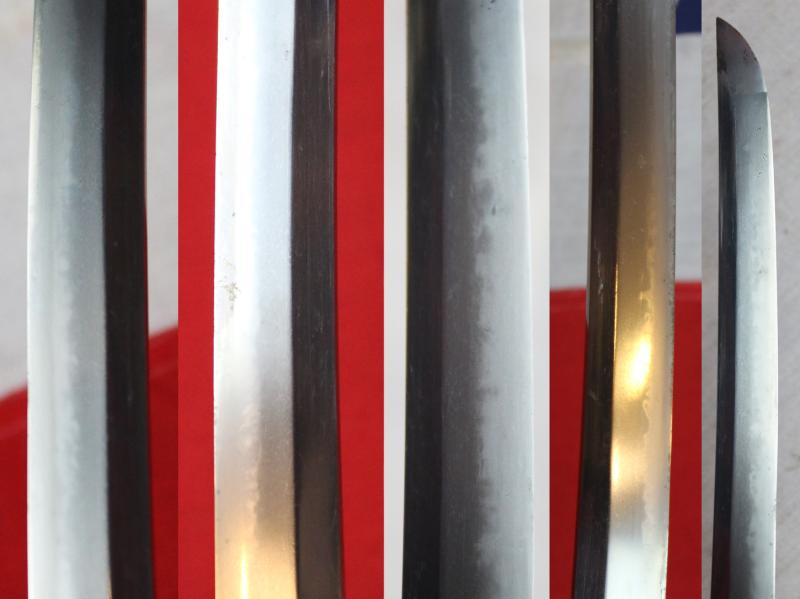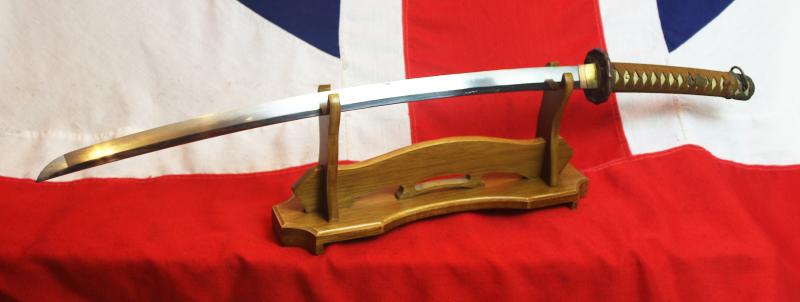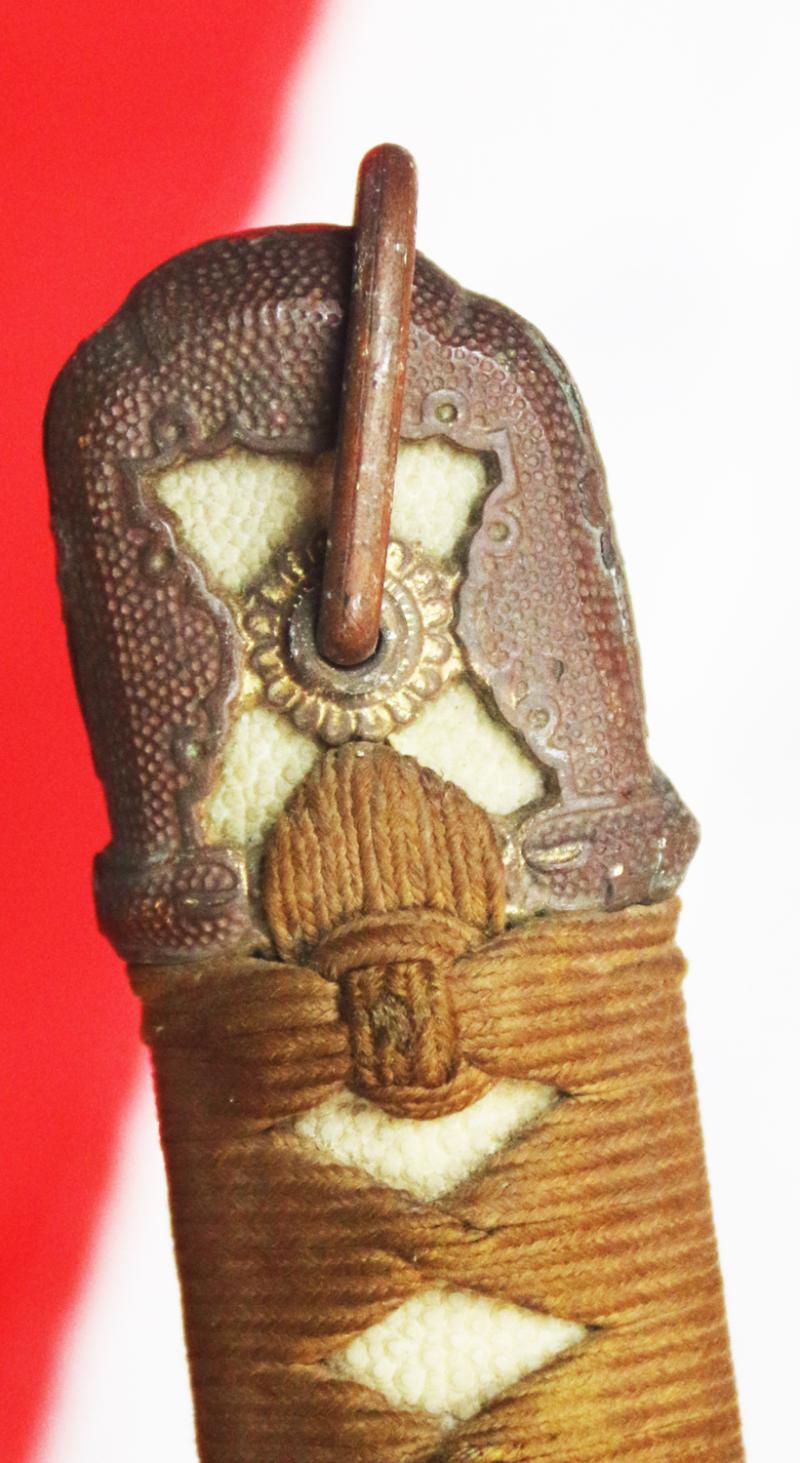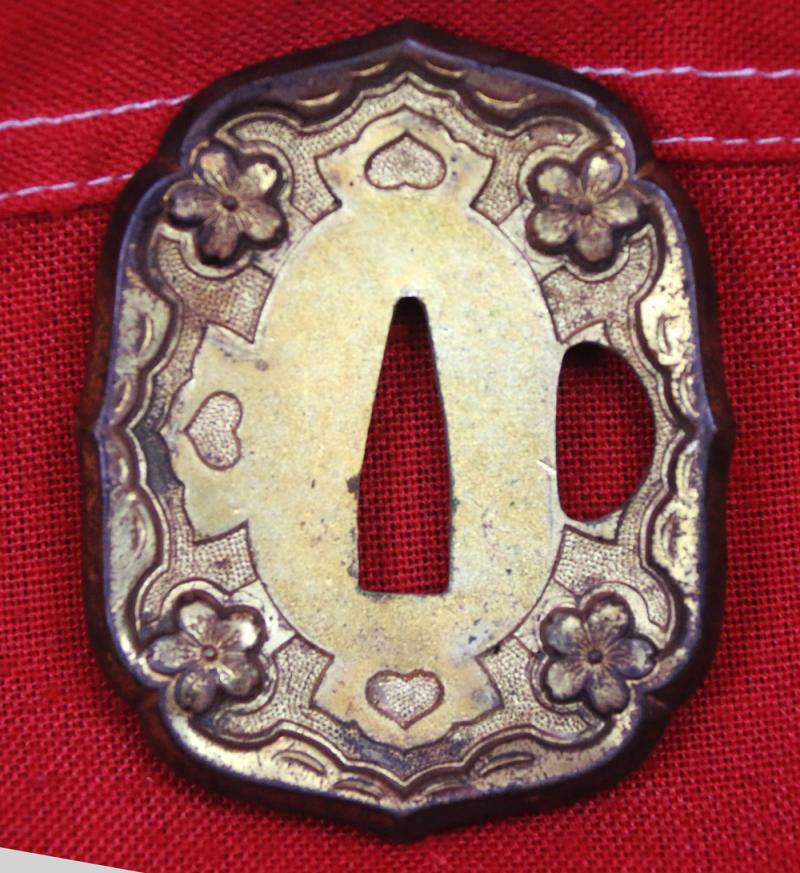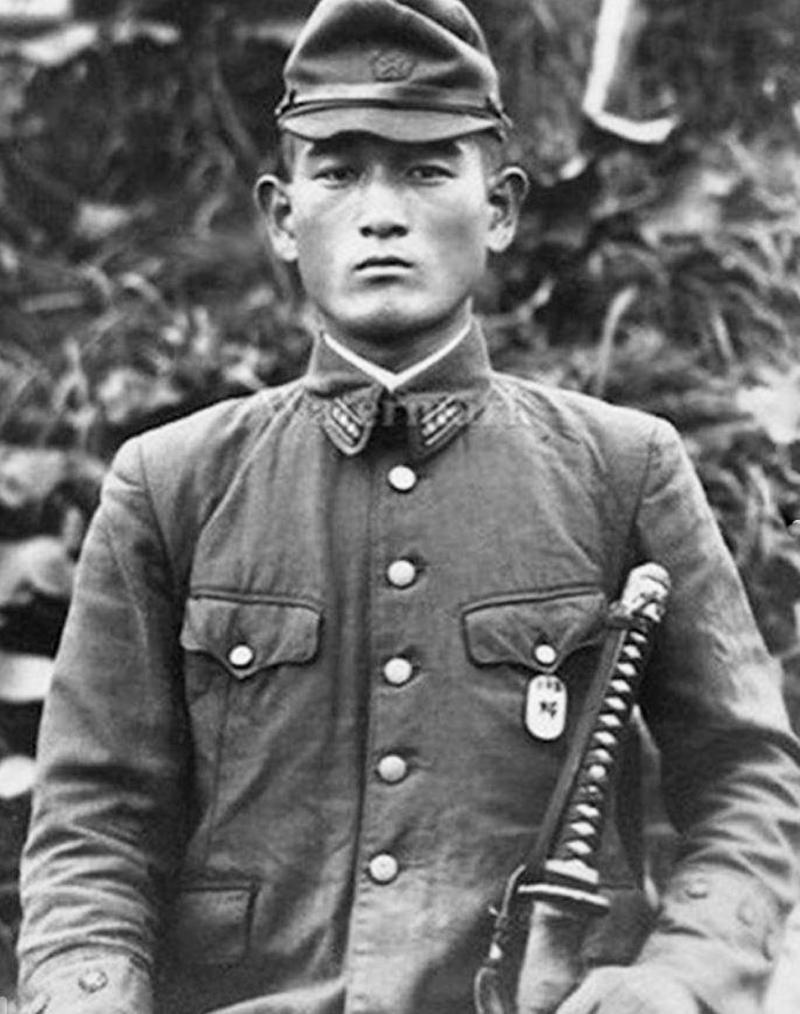A Stunning, Surrendered in 1945, Japanese 450 Year Old Ancestral Samurai Sword, Koto To Shinto Period, Mounted In Type 98 Military Shingunto Mounts For A WW2 Imperial Japanese Officer
Part of a superb collection of original WW2 Japanese swords, and early samurai swords recently acquired by us.
This is one of the best early ancestral swords with WW2 fittings that we have seen in a long time. The blade is superb for its age, wonderfully bright with an exceptionally vibrant hamon, and all its fittings are top class in very fine condition. An absolute beauty!
Fine quality type 98 Shin gunto officer's sword mounts, with an ancestral blade around 450 years old, late Koto to early Shinto period.
Sugata shinogi-zukuri with torii-zori, medium kissaki the hamon is a broad notare choji, two-piece copper and gilt deluxe habaki , nakago is ubu mumei and unsigned. Koshirae is traditional WW2 '98' pattern of good quality, the saya is wooden with leather protective cover and suspension ring; traditional tsuka wrapped in brown silk over good giant rayskin samegawa, fine standard brass military fuchi and kabutogane, tsuba and menuki decorated with sakura and kiku.
During the Meiji period, the samurai class was gradually disbanded, and the Haitorei Edict in 1876 forbade the carrying of swords in public except for certain individuals such as former samurai lords (daimyōs), the military and police. Skilled swordsmiths had trouble making a living during this period as Japan modernised its military and many swordcsmiths started making other items such as cutlery. Military action by Japan in China and Russia during the Meiji Period helped revive the manufacture of swords and in the Showa period (1926–1989) before and during World War II swords were once again produced on a large scale.
During the pre World War II military buildup and throughout the war, all Japanese officers were required to wear a sword. Traditionally made swords were produced during this period but, in order to supply such large numbers of swords, blacksmiths with little or no knowledge of traditional Japanese sword manufacture were recruited. In addition, supplies of the type of Japanese steel (tamahagane) used for sword making were limited so several other types of steel were substituted. Shortcuts in forging were also taken, such as the use of power hammers and tempering the blade in oil rather than hand forging and water tempering; these measures created swords without the usual characteristics associated with Japanese swords.
However, families of great standing or with samurai backgrounds and ancestry were permitted to allow their son's to wear military mounted swords but containing ancient ancestral blades, usually of great significance to the family's history. this is one of those swords. it was once estimated only 1 in 100 had such historical swords to carry in combat, while serving their divine emperor Hirohito in WW2.
The scabbard for the Type 98 was made of metal with a wood lining to protect the blade, and the option of adding a combat leather cover, or, as has this sword, a wooden scabbard covered with combat leather. Metal scabbards were often painted olive green to brown, but all types, wooden or metal were suspended from the officer’s belt by a single scabbard ring mount.
25 inch blade tsuba to tip
Code: 25279





